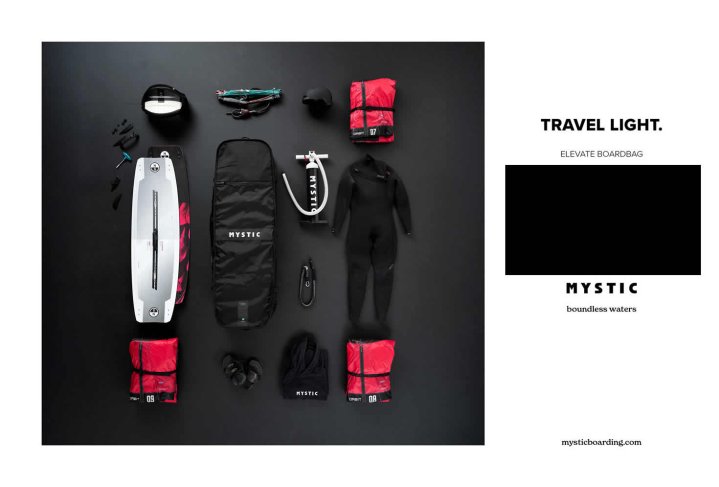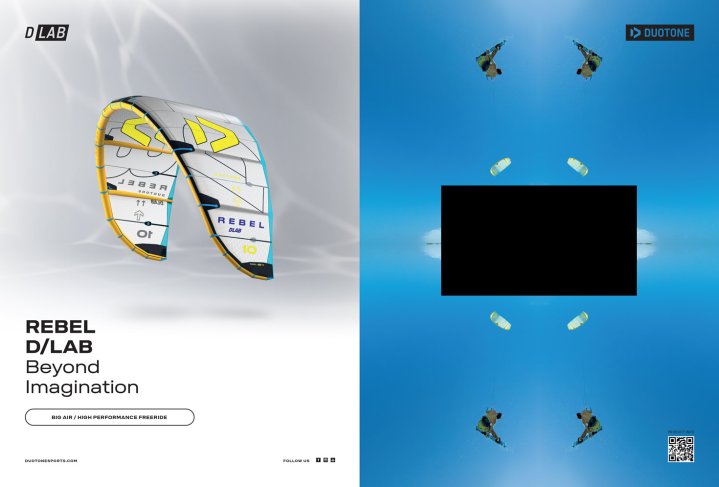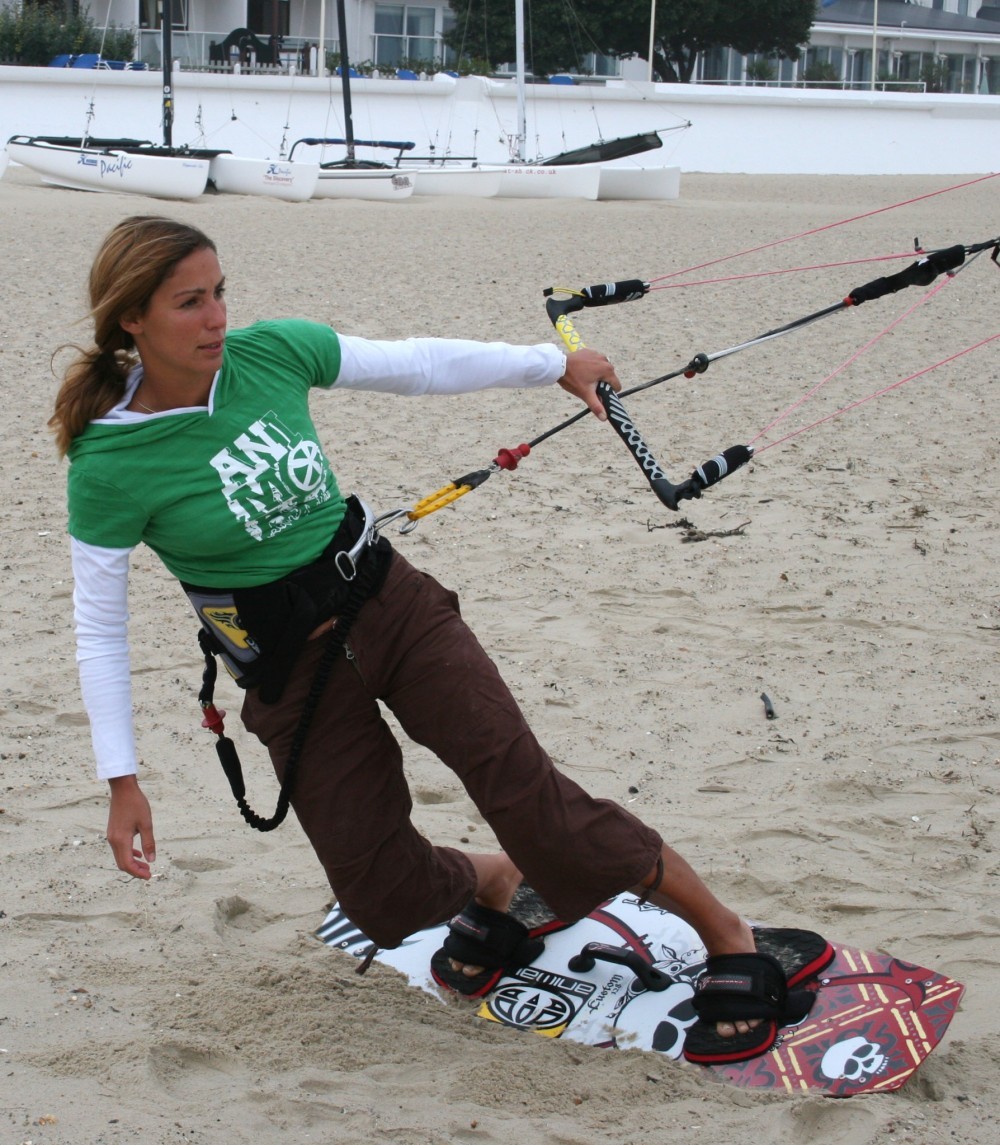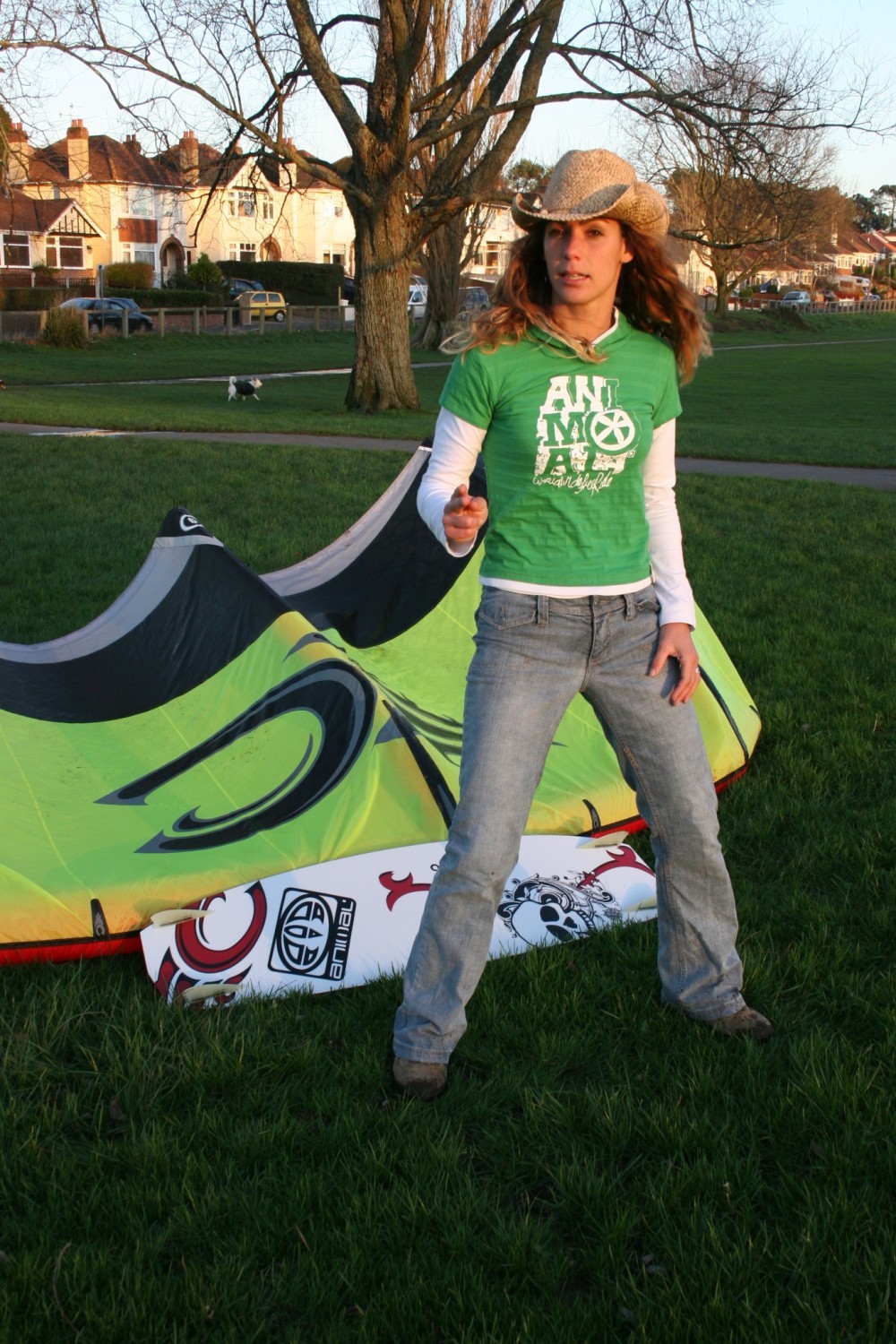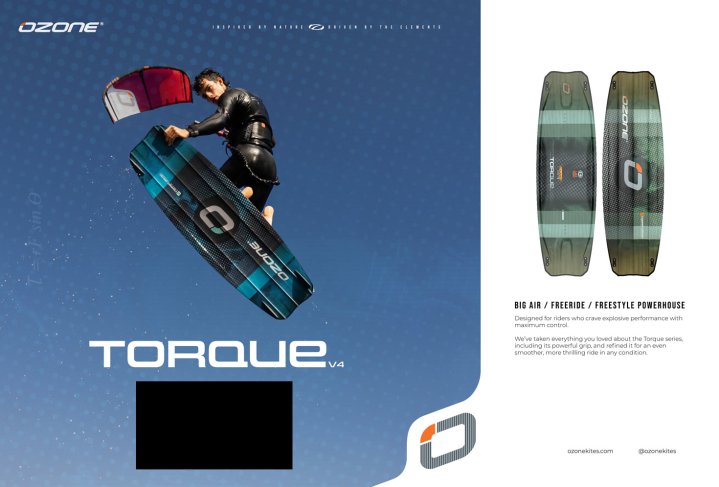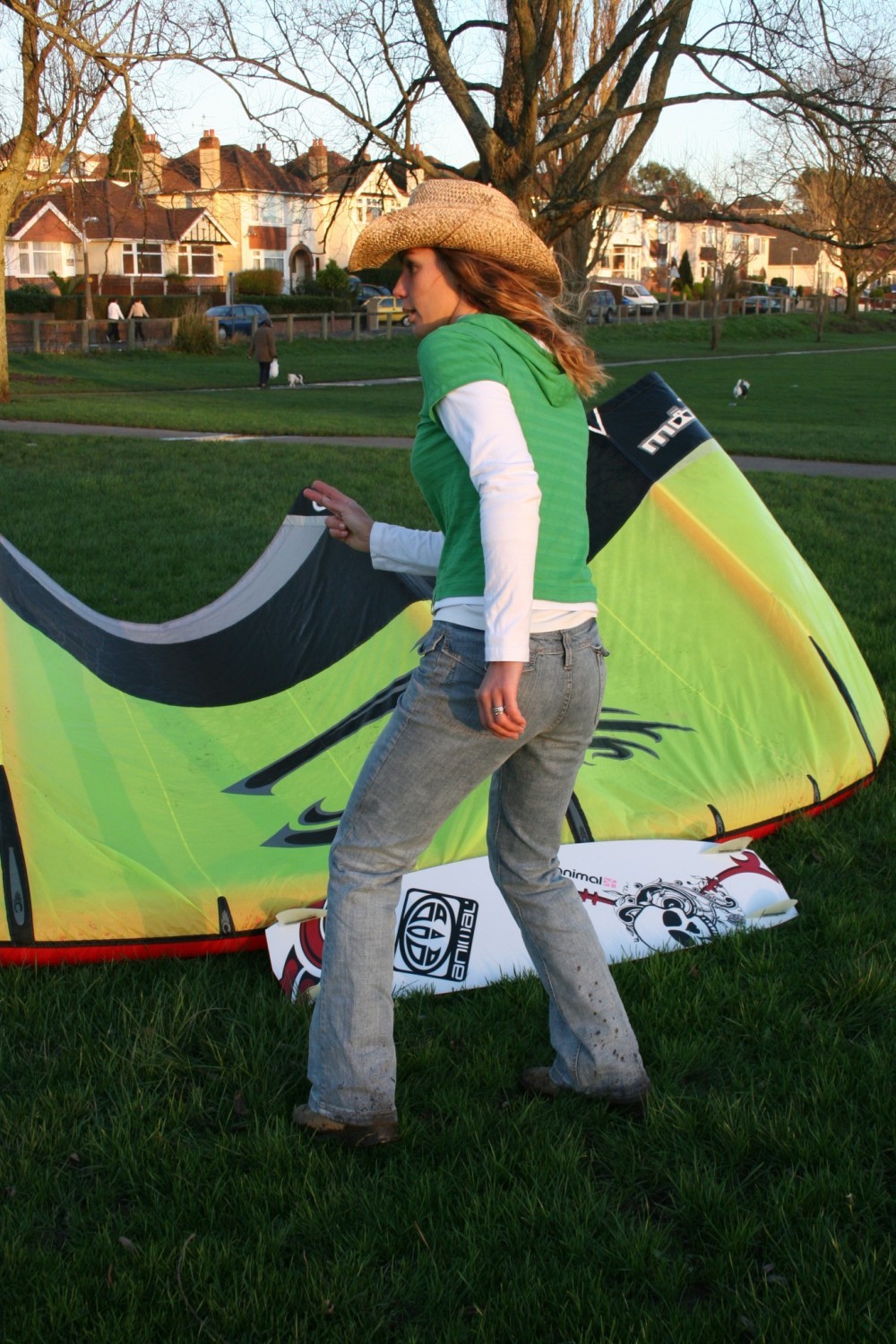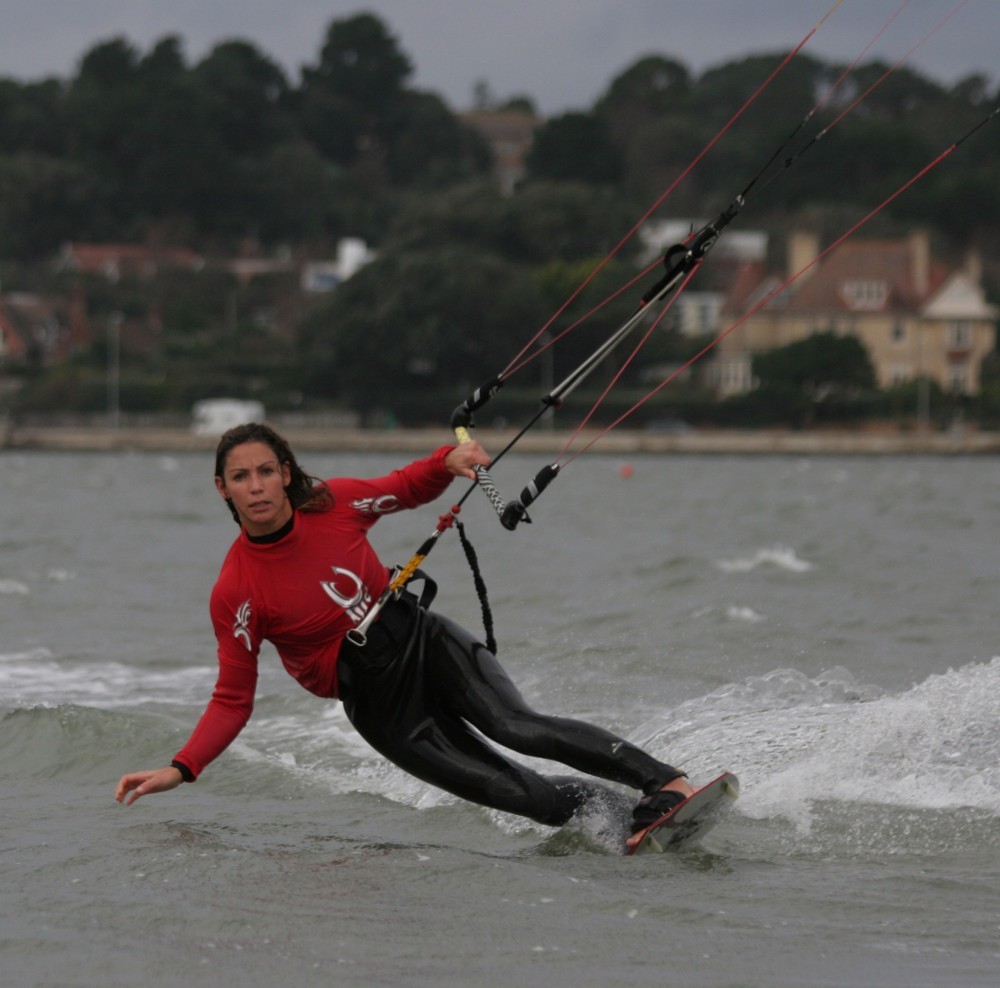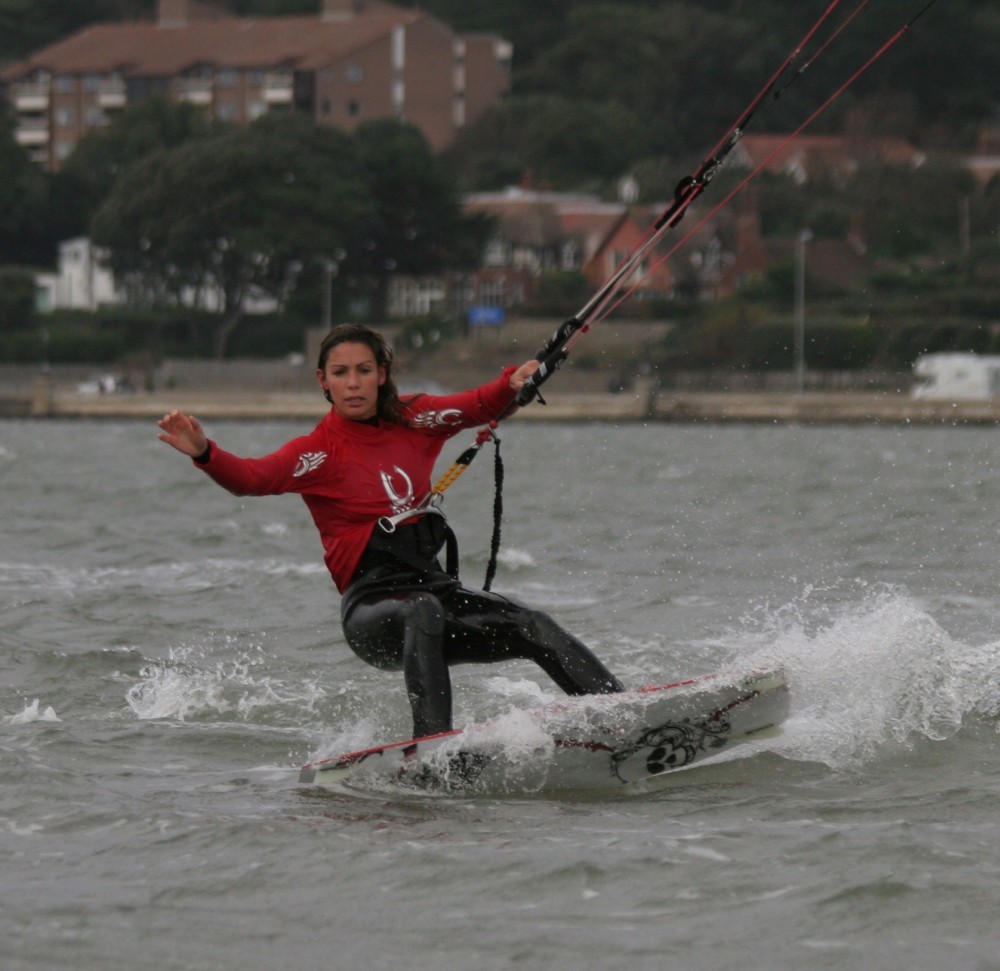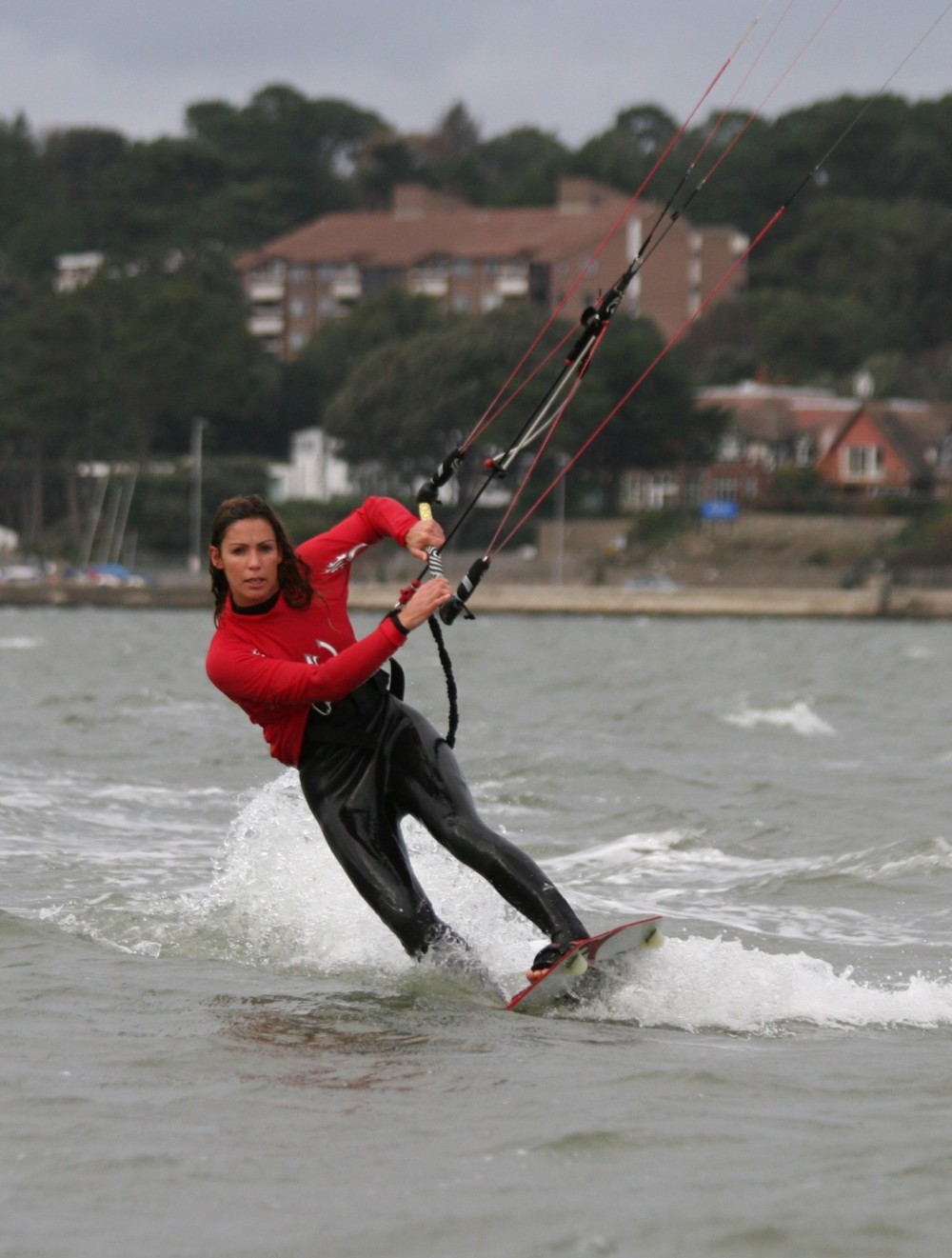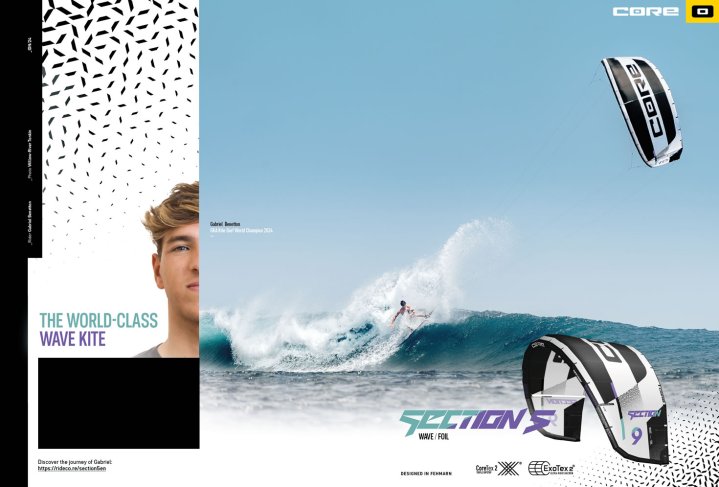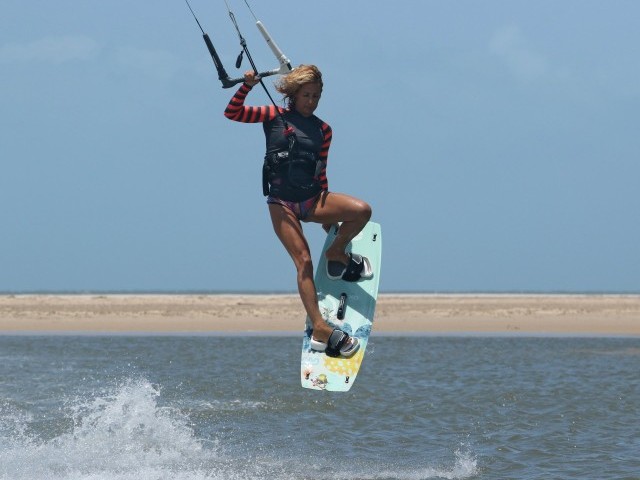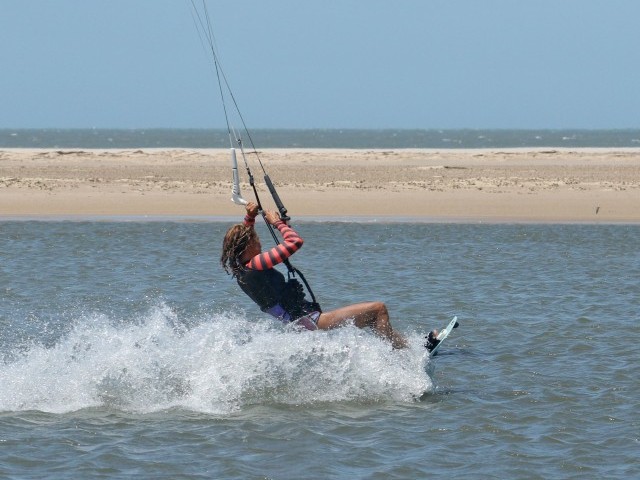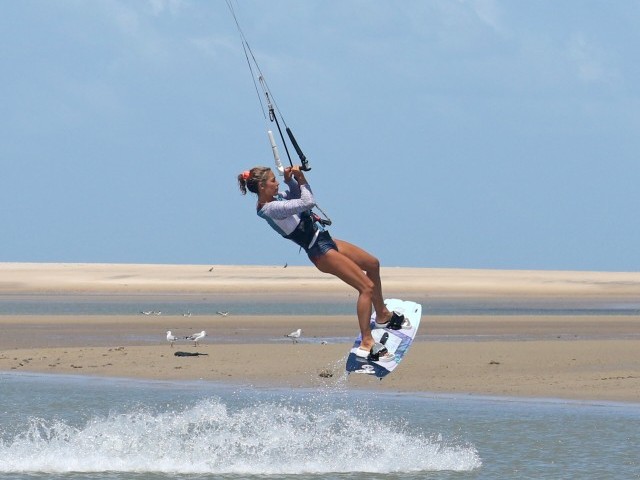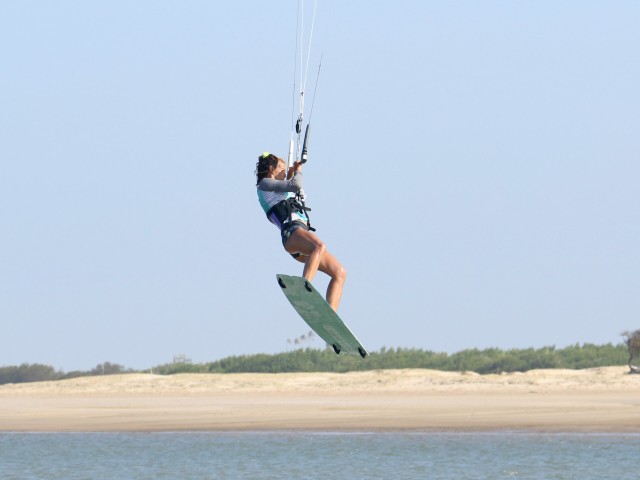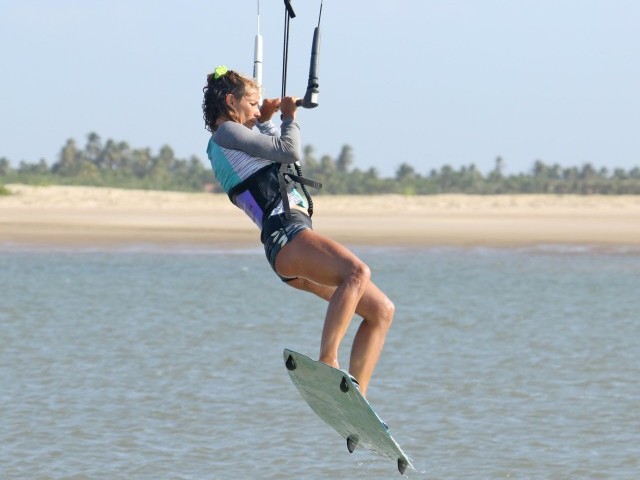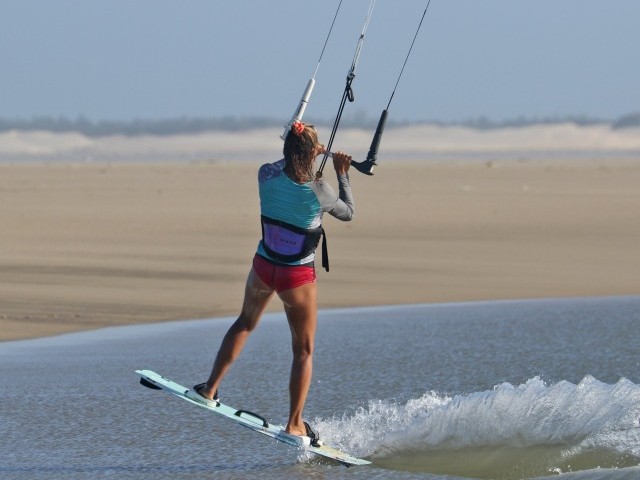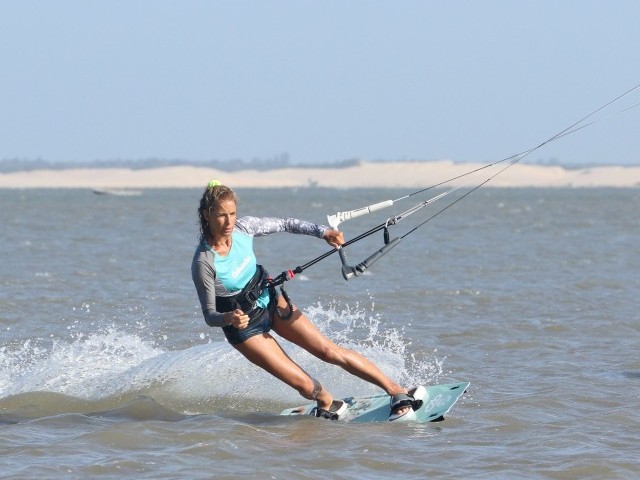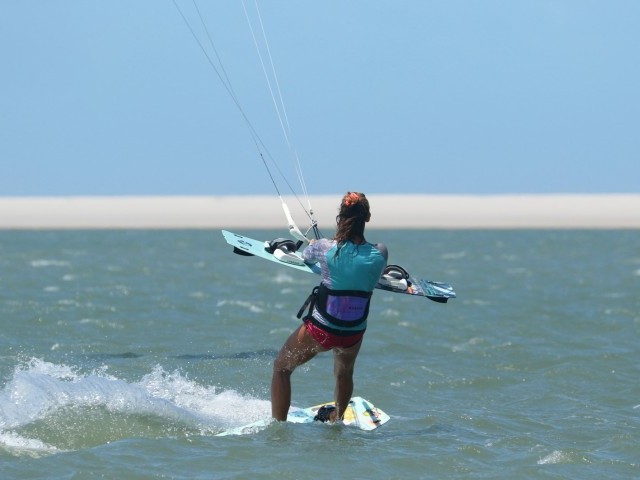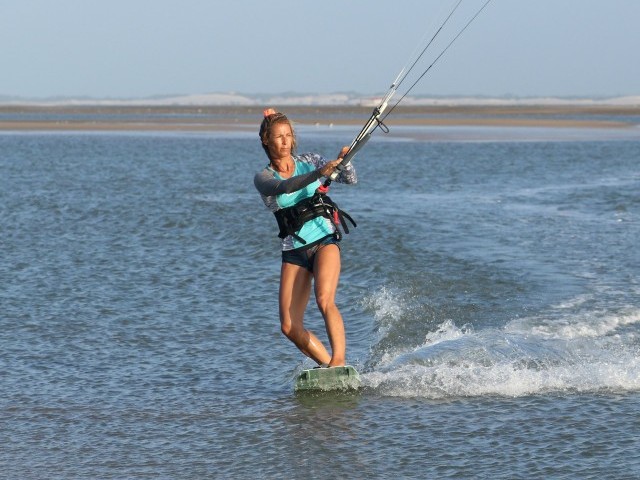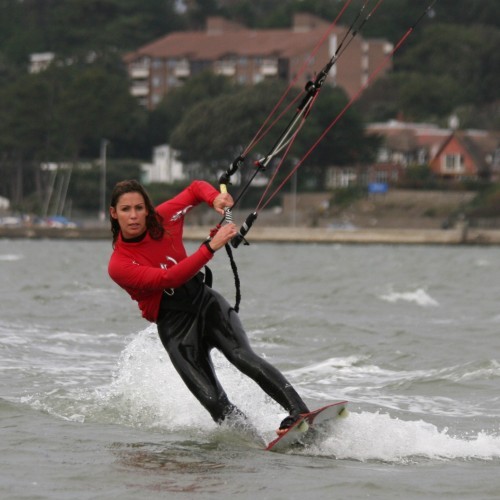
Switch to Toeside
Technique / Beginner
Introduction
Whether you are already attempting to ride toe side or are now contemplating the possibility, hopefully there should be a few helpful hints in the next page or two. As mentioned in the last issue, switching to toe side is a fairly natural step forward from the slide turn. If you are now sliding around like Torvill and Dean you will have learnt, consciously or subconsciously, that where you put your weight matters. More to the point if you move your hips over the front foot, the back of the board slides if you give it a push.
The simplest way of learning to ride toe side is to break it down into two fundamentals.
Switch: firstly you must learn to switch your feet. This means you will need to slide your board around, with weight always over your heels, so that the old back foot is leading. This will invariably lead to you following the kite downwind on a flat board and a resultant loss of power.
Toe Side: continuing round from switch by actually driving off the back foot, banking the board over onto the toe side rail and committing your body weight upwind of the board, replacing the tension in the lines and smiling ecstatically.
Left or Right?
In the perfect world that none of us live in, we would of course immediately try and learn switching to toe side in both directions. However just like cracking upwind, the chances are that one way will feel a whole lot easier than the other. If you favour riding with your right foot forwards, you will also prefer riding toe side with that foot leading. This means that you will probably find it easier to attempt toe side whilst riding to you left. If you love having your left foot riding out in front of you, then try toe side whilst heading right. If you have no preference, brilliant.
Landlubbers
Having a practice on land is always going to help, and if you are not fortunate enough to be out on the water tomorrow, at least you can start training your body.
The Switch
Some of you may remember the French cowboy, Lucky Luke, who was so quick on the draw that he could shoot his own shadow. Well switching is like a game of football with him!
Stand with your legs akimbo, as if you are riding across the wind. Knowing that your preferred foot is the back foot, and the one you will attempt to swing round. On the count of three you will turn 180, pivoting on your front foot. One, two three..
If you are still standing you will notice that to do this you bent your front leg, moved your hips over your front foot and then pushed you back foot around. If you fell over try looking at something eye level as you come round (and take the roller skates off). A very similar action to kicking a ball, it’s just your feet are further apart.
To make this more kitesurf like we need to bring in Lucky Luke’s pistol. Your pistol hand is the same side as your front foot before the twist. So stand as before, but tooled up, and this time, try and shoot your shadow (imagine it’s behind you), extending your arm out in front. Pic, A and Pic. B
This should feel more balanced, as your arm helps your body lead the twist. And because you are looking for your target your head is ready and steady too. You can practice this any time, at the office, in the pub, picking the kids up from school.
The Toe Side
Now that we are all walking around corners with a bad case of boardy rash, it’s time to get the toe side position sorted. Once again if you can, hook up a bar to something solid and try on land. It’ll be a lot easier to fine tune and contort your anatomy without the input of kite, wind and waves.
Pic. C and Pic. D If we look at Karine we can see that she is riding toe side with her left foot leading. She has twisted her body around to face upwind (looking for her target), which helps keep edge whilst driving through the balls of her feet. She has dropped her hips (and therefore weight) over her back (right) foot, driving the board upwind and keeping the nose up and out of trouble. Her shooting hand is still off the bar, leading her body into the necessary upwind commitment as her shoulders twist round upwind and her hips obligingly follow. Also by wearing a waist harness the hook can actually twist around, almost to face the kite, which makes it a considerably more comfortable and potentially a lot easier to twist.
Kit Set up and Hands
First attempts at toe side are best executed when you are feeling comfortable on the water. The size of your kite should not make much difference. Position wise try and keep it around 1 o’clock to 1:30, or 10:30 to 11 o’clock depending on which direction you are riding. The lower you have you kite, the further around to toe side you’ll go, the higher the easier it will be to slide the board. If you are using an ancient huge board (165cm or bigger), it may take a touch more effort to slide it all the way around.
When trying to switch to toe side, as with many other moves you don’t want the kite to be moving around too much. As you may well need to pull on the bar a tad should you loose power, it’s good practice to try and centre your hands on the bar either side of the chicken loop. Trim the bar down towards you to keep it within reach.
The Reality
Before heading out onto the water let us have one final analysis of what’s about to happen. Realistically once we are moving comfortably in the right direction, and have the kite positioned we will firstly switch our feet and then we will try and get into our toe side position.
Following Sequence 1
- Pic 1. Riding at a comfortable speed on her edge, Karine checks to see that she has space should she drop her kite. With both her hands near the centre of the bar she releases her front hand.
- Pic 2. She turns the nose of the board up into the wind by driving through her back foot and twisting her body upwind.
- Pic 3. As the board starts to slow she completely opens up her body and starts to lean over her front foot.
- Pic 4. Karine now has all her weight over her front foot, but is still very much on her heel side edge, almost sinking the nose. She now forces her back foot through as she points her pistol upwind. Up to this point Karine has done the same body weight action as an approach to a slide turn. Also see Pic. E
- Pic 5. As the board comes round to face the kite Karine’s weight has stayed over her right foot, which is now very much her back foot. Note how bent her right leg is, and how the left leg (the new front leg) is extended as it kicks through.
- Pic 6. With the switch complete and the board now flat and facing the kite, Karine must try and force herself into the toe side stance so as not to loose power.
- Pic 7. Realising that she will need more power, and the kite is rising, Karine reaches up for the bar.
- Pic 8. Leaning over upwind Karine aims to place the board in-between herself and the kite, tensioning the lines, by twisting the shoulders and hips upwind and away from the kite.
- Pic 9. Diving the kite for more power, Karine drives through her back foot, pushing away through her legs. Also see Pic F
- Pic 10. This carves the board upwind and holds the nose up.
- Pic 11. Now comfortably toe side Karine drops her hand to help her shoulders remain twisted upwind and blasts off.
How to Get Back
It’s all good and well getting to switch and toe side, but it’s pretty handy too if you know how to get back. There are a few techniques, but briefly here are two of the best.
Carve: if you move the kite back across to the other side of the window, follow it with your head, exaggerate your switch position and pivot over your back foot by really bending the back knee and dropping your weight over the rear of the board. This is also a great to do if you find that you have pulled too much on the backhand and the kite has risen. Just keep pulling harder and you’ll execute a blinding heel side carve.
Slide: keep the kite moving forward, flatten the board off so that you are switch, then lean onto your heels, put all your weight onto the front foot, bending the front knee and force your back leg through. For a split second you may almost travel in the wrong direction before the board realises which way you fancy going. Before you know it you’ll be back in heel side heaven.
Top Tips
If you are falling onto you face, concentrate on keeping your weight over the heel-side edge of the board the entire switch process. Only try and get your weight over your toes once the board has turned to follow the kite.
At first if you can make the switch and head off slowly following the kite you have achieved a lot. A solid toe side will take some practice.
If you feel you are loosing control of the kite, either because you are sheeting out too much or it keeps rising, feel free to get both hands back on the bar.
Make sure your footstraps are big enough, as you will need to be able to get the pressure from the balls of your feet over the centreline onto the other side of the board.
Some people make a real effort to stroke the water. This is fine as long as the hips are also pushed down towards the water. However if you break at the waist and adopt the rather fetching “take me” position, you will find it jolly hard to keep your edge.
As you get more confident start with more speed and a slightly lower kite. This will make the entire process smother as the board will both slide more easily during the switch phase, and the edge will bite more easily on the toe side phase. You will also spend less time with slack kite lines.
Finally as you start to maintain more speed try pushing off your back leg more, getting a bit more weight onto your front foot. This will make the board happier to plane and faster.
Once your toe side is sorted it will open up a whole plethora of kiting adventures where you’ll be able to carve, wave ride, take off from and land to toe side. Enjoy.
This technique article was in Issue 2 of IKSURFMAG.
Related
By Christian and Karine
Christian and Karine have been working together as a coaching team, running improver to advanced kitesurfing clinics since 2003.


